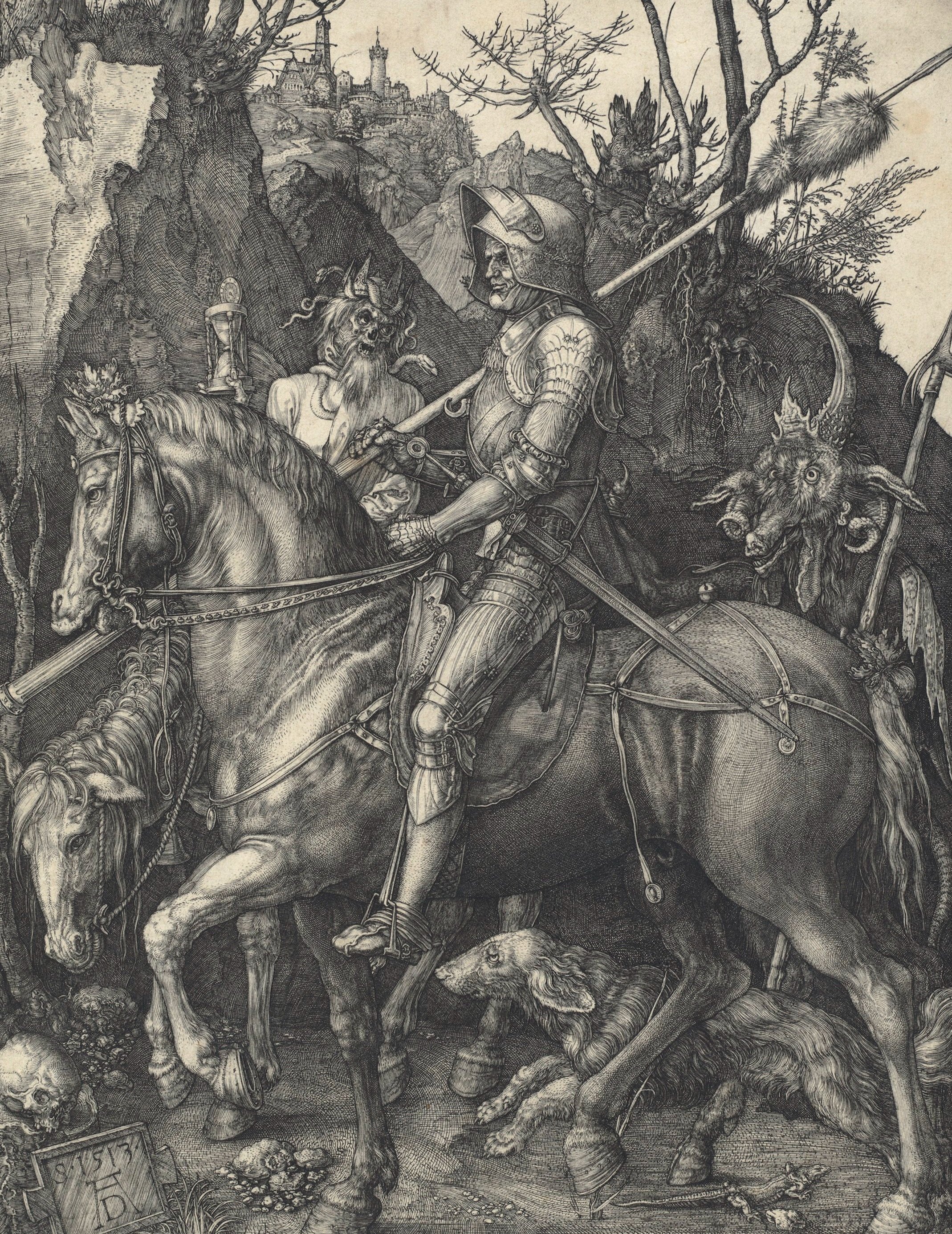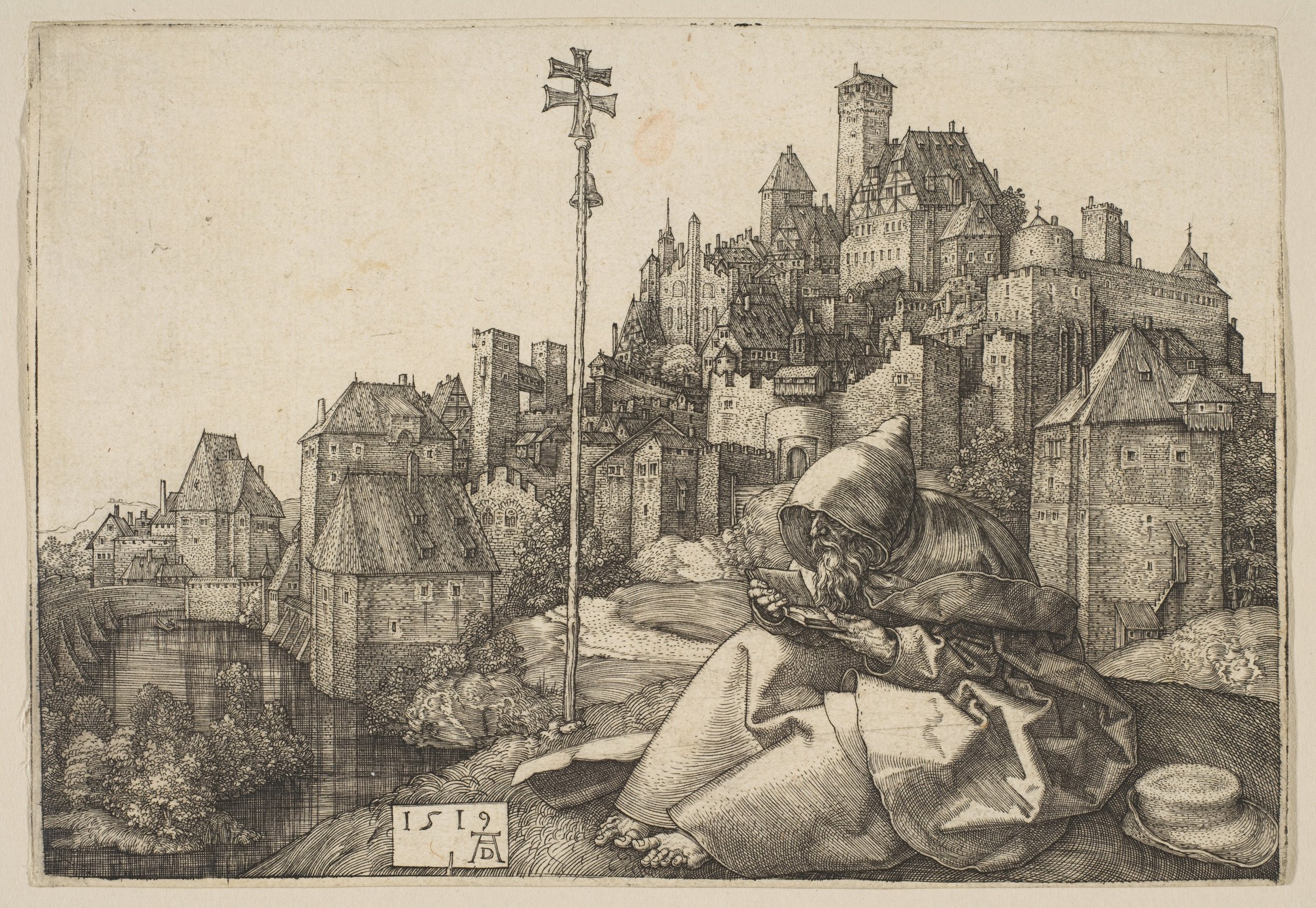
Project Events
Several workshops and associated public lectures will be held over the life of the project. Watch this space for more information in due course.
Tracing Melancholy: lute works from Dalza to Dowland
A unique event to mark the opening of the 2024 Being Human Festival.
Played for kings, queens, and artists such as Dürer himself, the lute has been celebrated as a vehicle for understanding human emotion and desire. Now, lutenist Rosemary Hodgson presents a unique performance of early lute music, inspired by the famous print Melencolia I in the Dürer exhibition at the University of Melbourne.
After the performance, enjoy the exhibition at your leisure or join curators Dr Matthew Champion and Associate Professor Jenny Spinks for pop-up talks in the gallery space to learn more about key collection items.
The Triumph of Fashion: A Global History
A fascination with fashion is a marked feature of life across the world. What does the legacy of this historical process mean today?
The pre-industrial period of c.1300-1800 was pivotal for fashion’s global triumph. Fashion emerged as a powerful economic sector, connecting groups of makers, traders, consumers and thinkers who embraced its effects and often ecological devastation. Books about the history of fashion often only start in 1800 or just focus on Europe, many commentators only see courts and elites as drivers of change while others assume that fashion has always existed through practices of adornment. But the story needs to be told from the bottom up, as consumers drove innovation.
Fashion, moreover, is often defined through European categories, which turn on novelty in tailoring. As a result, Europe is often claimed to have invented fashion. Yet the definition is wrong and change within Europe shared features with and substantially depended on change elsewhere. Nor was the Western world central to trade in clothing well into modernity. To understand these processes means to understand history and how we have come to think about ourselves in time in new ways.
Ulinka Rublack is Professor of Early Modern History at the University of Cambridge and Fellow of St John´'s College. Her recent books include Dürer´s Lost Masterpiece: Art and Society at the Dawn of a Global World (Oxford University Press, 2023), The Astronomer & the Witch: Johannes Kepler’s Fight For His Mother (Oxford University Press, 2015), and Dressing Up: Cultural Identity in Renaissance Europe (Oxford University Press, 2010).
Register: https://events.unimelb.edu.au/historical-and-philosophical-studies/event/38010-the-triumph-of-fashion-a-global-history
Albrecht Dürer’s Material Renaissance
Hybrid workshop, 15-16 August, University of Melbourne
Dagmar Eichberger (University of Heidelberg): Material encounters on Dürer’s Journey to the Netherlands 1520-21
Stefan Hanß (University of Manchester): The Matter of Birds in Dürer’s Nuremberg: A Multispecies History of Emotions, Making, and Artistic Innovation in the Material Renaissance
Larry Silver (University of Pennsylvania): Nuremberg Sculptors, Materials and Devotion in the Choir of St. Sebald’s
Holly Fletcher and Sasha Handley (University of Manchester): Dürer’s Pillows
Heike Zech (Germanisches Nationalmuseum): Dürer and the Allure of Silver
Christine Demele (Albrecht-Dürer-Haus): “Copper Pieces for a Gulden”: Dürer and the value of art
Edward H. Wouk (University of Manchester): Making and Remaking Melencolia I: Nuremberg, Antwerp and Manchester
Andrew Morrall (Bard Graduate Centre, New York): Perspective, Instrumentation, and ‘Objective Vision’ in Albrecht Dürer’s Approach to the Material World
Lyndal Roper (University of Oxford): What deserves a monument? Dürer and commemorating the Peasants’ War
Charles Zika (University of Melbourne): Confronting Jews in Dürer’s Nuremberg world
Ulinka Rublack (University of Cambridge): Subject and Object in Dürer’s Venetian Letters
Jeffrey Chipps Smith (University of Texas at Austin): The Collaborative Dürer
Daniel Hess (Germanisches Nationalmuseum): “A miraculous gift from God” – Dürer’s translation of the physical world into art

Dürer-mania – Early Commerce and Collecting of Albrecht Dürer’s Prints
NGV Scholars Series lecture
Prof. Jeffrey Chipps Smith
The woodcuts, engravings, and etchings by Albrecht Dürer (1471-1528) have long been prized for their creativity, intellectual content, and technical virtuosity. His art marks the apogee of Renaissance printmaking.
World-renowned art historian and Dürer expert Professor Jeffrey Chipps Smith shares how Dürer sold, bartered, and gifted his prints and how, in the century after the Nuremberg master’s death, his works became prized possessions in princely Kunstkammern and other famous art collections across Europe.

Exhibition launch - Albrecht Dürer’s Material Renaissance
Exhibition opening, Albrecht Dürer's Material Renaissance. Arts West Gallery, University of Melbourne. Photo: Drew Echberg.
The exhibition Albrecht Dürer’s Material Renaissance was launched at the University of Melbourne on 1 August 2024 by the University's Chancellor, Jane Hansen, and to the accompaniment of a mesmerising performance by lutenist Rosemary Hodgson. Complementing the 2023-24 exhibition curated by members of the project team at the Whitworth in Manchester, the Melbourne exhibition displays over 90 prints and books from the collections of the University of Melbourne and the State Library Victoria, drawing together elements of Dürer's world: Renaissance Nuremberg; music; fashion; the household and the body; the Renaissance book; weaponry and conflict; and piety and persecution. Invited guests included internationally renowned experts on Dürer, students and scholars from across disciplines and organisations, and representatives of Melbourne's cultural institutions. Jenny Spinks and Matthew Champion, speaking on behalf of the curatorial team, thanked representatives of lending institutions and curators and staff of the University of Melbourne's Special Collections, the Grimwade Centre for Cultural Materials Conservation, and the State Library Victoria. The exhibition has already been reviewed and publicised in the local and national press, drawn thousands of visitors from the campus and the wider community, and is open to view at the University of Melbourne's Arts West Gallery, 10am to 4pm Monday to Friday until November 29.
For further details: https://arts.unimelb.edu.au/about/arts-west-gallery/albrecht-durers-material-renaissance
Unknotting Dürer’s Jerome with Prof Alexander Marr (Cambridge)
Third in the series Albrecht Dürer's Material World: Print Culture in Focus
A series of talks supported by The John Rylands Research Institute and Library, celebrating The Whitworth’s landmark exhibition Albrecht Dürer’s Material World
The pendulant gourd in Dürer’s St Jerome in his Study (1514) has long been an object of fascination and frustration for art historians. While most acknowledge that by including this bulbous fruit so prominently in the print Dürer intended it to have some special meaning, nobody can quite agree on what that meaning is. Interpretations have tended to be iconographical, drawing on sometimes obscure texts while largely ignoring the object’s curious, virtuosic form. Focusing on that form and the internal logic of the image, this talk will explore how, in the St Jerome, Dürer tackled the knotty problems of representation, ornament and signification.
More about Alexander Marr's research here: https://www.alexandermarr.com
Register here: https://shorturl.at/ek289
Dürer and the Making of Modernism with Prof Ulinka Rublack
Second in the series Albrecht Dürer's Material World: Print Culture in Focus
A series of talks supported by The John Rylands Research Institute and Library, celebrating The Whitworth’s landmark exhibition Albrecht Dürer’s Material World
Based on Rublack´s recent monograph Dürer´s Lost Masterpiece; Art and Society at the Dawn of a Global World (OUP, 2023), this talk queries the view that Dürer was predominantly a master of self-fashioning. For much of his career, he felt adrift between the multiple and conflicting voices of his age, unable to reconcile them within himself. This profound experience was one wellspring of his creativity. A re-reading of his career looks at the importance of painting for this master of print. It also emphasizes the importance of his merchant friends and emergence of new global collecting cultures at the end of Dürer´s life, as art markets diversified and the Reformations took hold. In sum, the talk proposes new answers to the question about what links Dürer to the making of modernism.
More information about the research of Professor Ulinka Rublack here:
https://www.hist.cam.ac.uk/people/professor-ulinka-rublack-fba
Register here: https://shorturl.at/zD069
Albrecht Dürer’s Conceptions of Measurement with Prof Jeanne Nuechterlein (York)
First in the series Albrecht Dürer's Material World: Print Culture in Focus
A series of talks supported by The John Rylands Research Institute and Library, celebrating The Whitworth’s landmark exhibition Albrecht Dürer’s Material World.
Throughout his career, Dürer sought to underpin his artistic work with theories of measurement and proportion. Early on, he appeared to believe that someone with the right knowledge would be able to show him the ‘correct’ approach to bodily proportion, but when he failed to find a teacher, he resolved to find the answers through his own studies. We know that he consulted the writings of Vitruvius and Euclid, among others, but over the years he became less confident that any single system could suffice for the complexity of artistic production. This talk will address the evolution of Dürer’s attitudes towards measurement and his mature views as expressed in his treatises Underweysung der Messung (Instruction on Measurement, 1525) and Vier Bücher von menschlicher Proportion (Four Books on Human Proportion, 1528). Both of these works suggest that he still believed in the intrinsic value of mathematical systems, even while also believing that what artists needed above all was the capacity to invent freely. The intrinsic contradictions within these views can be seen in the woodcut illustrations to these treatises, as well as in his printmaking more generally.
More information about the work and research of Professor Jeanne Nuechterlein here: https://www.york.ac.uk/history-of-art/staff/nuechterlein/
Register here: https://shorturl.at/dmtST

Exhibition launch: Albrecht Dürer’s Material World
On 13 July 2023, Albrecht Dürer’s Material World was officially launched. The exhibition launch brought together a wide public audience with a range of internationally acclaimed experts of the art of Albrecht Dürer, as well as academics and leadership representatives of the University of Manchester, the Whitworth, the Friends of the Whitworth, the city’s wider cultural institutions, as well as directors, curators, and representatives of lending institutions, nationally and internationally. This was a public, enthralling, and inspiring event, full of rich exchange and conversations. Stellar exhibition reviews published in the national press attracted a wide and engaging audience. Edward Wouk, speaking on behalf of the curatorial team, addressed visitors and thanked members of the Whitworth team and our sponsors. The local vocal ensemble Mancunum Consortium performed a selection of music from Renaissance Germany.

Albrecht Dürer’s Material World
Hybrid symposium, 13-14 July 2023, The Whitworth Study Centre
Jenny Spinks (University of Melbourne): Devouring the Book in Renaissance Nuremberg
Andrew Morrall (Bard Graduate Centre): Dürer and the Materiality of Vision
Daniel Hess (Germanisches Nationalmuseum): Dürer’s Surfaces and Objects: translating the material world into painting
Heike Zech (Germanisches Nationalmuseum): Between Realism and Fantasy: Dürer’s Silver
Ulinka Rublack (University of Cambridge): Dürer’s Coats
Jeffrey Chipps Smith (University of Texas at Austin): The Collaborative Dürer
Shira Brisman (University of Pennsylvania): Expressions of Equity in Early Modern Craft
Exhibition Showcase Led by Dr Ed Wouk and Imogen Holmes-Roe with a presentation from Giulia Bartrum (British Museum)
Christine Demele (Albrecht-Dürer-Haus): Dürer and Money
Dagmar Eichberger (University of Heidelberg): Ferdinand Columbus collects Albrecht Dürer. Interpreting the Stock of a Spanish Print Enthusiast
An Van Camp (Ashmolean Museum): The Ashmolean’s German Design Drawings Explored
Charles Zika (University of Melbourne): Jewish Presence and its Material Relics in Dürer’s Nuremberg World
Matthew Champion (University of Melbourne): Sounding Albrecht Dürer’s Material World
Larry Silver (University of Pennsylvania): Adam Kraft’s Moving Sandstones

Views into Albrecht Dürer’s World
From tiles to feathers, from armour to books, Dürer’s prints are filled with a world of material objects which he studied and rendered with exacting detail, remaking them through his art.
How can we approach these objects of exquisite manufacture through Dürer’s eyes? Our speakers will discuss the use of digital microscopy in their research and will explore the emotional power of objects in Dürer’s time, looking at Dürer’s depiction of sleep and dreams, his fascination with birds and armour, and his attention to cross-cultural interaction between Renaissance Germany and the Islamic world.
Albrecht Dürer's Material World Inaugural Seminar
Online team workshop, Australian Research Council Project ‘Albrecht Dürer’s Material World’
6-7 July 2021, 8 pm–10 pm
